 | | | To close out the year, the RCC Coasts and Oceans Observer reflects on the outcomes of COP28, the annual international climate conference, the latest in coastal climate change adaptation and mitigation strategies, pollution and its threats to marine life, and more recent news. 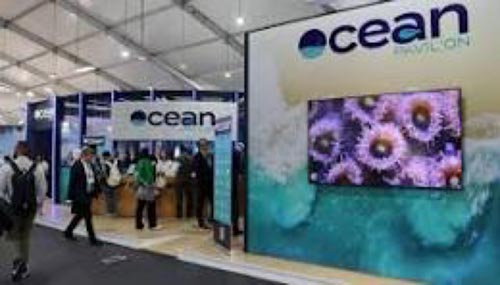 This month, the ocean was a focal point of COP28. Discussions of climate change mitigation involved the role of coasts and oceans and the conference’s Ocean Pavilion gave attendees a space to discuss marine biodiversity, nature-based solutions, and related topics. Nevertheless, the major agreement that emerged from the conference included no specific ocean conservation goals, drawing criticism from experts in the field. This month, the ocean was a focal point of COP28. Discussions of climate change mitigation involved the role of coasts and oceans and the conference’s Ocean Pavilion gave attendees a space to discuss marine biodiversity, nature-based solutions, and related topics. Nevertheless, the major agreement that emerged from the conference included no specific ocean conservation goals, drawing criticism from experts in the field. 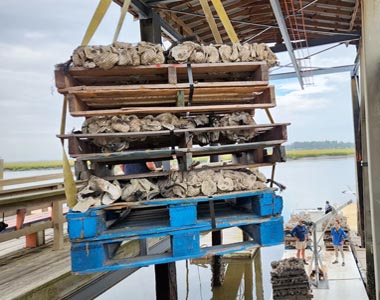 But COP28 definitely drew attention to the many ocean-based solutions to climate change, and interest in these solutions is growing. California recently began exploring the possibility of harnessing energy from ocean waves, which could help the state reach its goal to transition to an entirely renewable electric grid by 2045. On the other side of the country, researchers at Georgia Southern University are studying the capacity for oyster reefs to sequester carbon dioxide. But COP28 definitely drew attention to the many ocean-based solutions to climate change, and interest in these solutions is growing. California recently began exploring the possibility of harnessing energy from ocean waves, which could help the state reach its goal to transition to an entirely renewable electric grid by 2045. On the other side of the country, researchers at Georgia Southern University are studying the capacity for oyster reefs to sequester carbon dioxide.
Funding for these solutions in the United States has continued to pour in from the federal government. NOAA and the National Fish and Wildlife Foundation recently announced $144 million in grants for natural infrastructure projects in coastal states. Scientists in North Carolina have applied for a $160 million grant from the National Science Foundation to develop a research institution on the coast that will study eco-technology, including renewable energy. But despite progress in coastal conservation and adaptation, the impacts of climate change grow more severe. In the Marshall Islands, government officials have created a massive climate change adaptation strategy, but many still face the possibility of displacement from their home. And even as plans for offshore renewable energy have advanced, so have deep sea mining efforts. The struggle against offshore drilling and mining operations has been widespread this year. Native Hawaiians gathered on Sand Island to protest a deep-sea mining vessel that recently entered the waters off the coast of Hawaii. 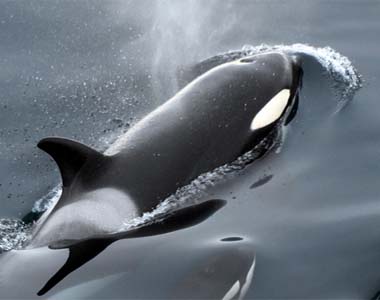 Offshore mining and other human activities have led to increased marine pollution, with major risks to wildlife. Chemicals like PCBs are accumulating in the blubber of North Atlantic orcas, a sign that pollution is affecting even the most remote ocean species. Offshore mining and other human activities have led to increased marine pollution, with major risks to wildlife. Chemicals like PCBs are accumulating in the blubber of North Atlantic orcas, a sign that pollution is affecting even the most remote ocean species.
In our “Books” section, RCC President Dr. Bob Musil reflects on Rachel Carson’s fascination with the ocean and the dangers to the magnificent bluefin tuna in his review of Karen Pinchin’s Kings of Their Own Ocean. Also in this section, we feature Laura Trethewey’s The Deepest Map, which explores the effort to map the ocean floor and its implications for science, industry, and natural resource exploitation. Amid the continuous challenges and threats to coastal and ocean ecosystems, this year brought many stories of hope, including historic levels of federal funding provided for coastal resilience, technological innovation to clean up water pollution, developments in renewable energy, and even heartwarming success stories of rehabilitated marine wildlife. While the COP28 agreement reminds us that we still have a long way to go, every small victory and advancement drives us closer to a brighter future. | | | | | | | |  Emma Brentjens - RCC National Environment Leadership Fellow (Presidential) Emma Brentjens - RCC National Environment Leadership Fellow (Presidential)
Emma Brentjens is the co-lead of the RCC Coasts and Oceans program. She is a Master of Environmental Management student at Duke University studying Ecosystem Science and Conservation and Community-based Environmental Management. | | | | | | New England's Decades-old Shrimp Fishery, a Victim of Climate Change, to Remain Closed Indefinitely Regulators voted on Friday that New England’s long-shuttered shrimp business, which fell victim to warming waters, will remain in a fishing moratorium indefinitely New England's long-shuttered shrimp business, which fell victim to warming waters, will remain in a fishing moratorium indefinitely, fishery regulators ruled on Friday. | | | | | | | | The Oceans Are Diverse. Their Champions Should Be, Too. I am a South Asian woman of color living and working as a marine conservationist in the global south. I also belong to the tropical majority — the 1.59 billion ocean-dependent people who live in low- to middle-income countries in the tropics. Because of my background, I have encountered innumerable and unnecessary challenges to have my abilities acknowledged and gain a seat at the decision-making table with regard to marine conservation. | | | | | | | | Biden-Harris Administration Unveils First-Ever Strategy to Advance Environmental Justice for Communities That Rely on the Ocean and Marine Resources During the United Nations’ Conference of Parties (COP28) today, the Biden-Harris Administration unveiled the first-ever U.S. Ocean Justice Strategy to advance environmental justice for communities that rely on the ocean and Great Lakes for economic, cultural, spiritual, recreational, and food security purposes. | | | | | | | | Did the Tides Turn For Oceans at COP28? Climate Summit Draws Mixed Reviews The ocean plays an oversized role in regulating Earth’s climate and reducing human-produced greenhouse gas emissions. The watery realms of our planet capture about 25% of global carbon dioxide emissions and absorb around 90% of the excess heat resulting from these emissions, protecting Earth’s inhabitants from some of the worst impacts of human-driven climate change. Yet many climate crisis discussions have overlooked the importance of the ocean and neglected to protect the life-supporting functions of marine ecosystems. | | | | | | | | 2023 in Review: Amid Growing Ocean Threats, a Surge of Innovative Solutions Across the globe, climate change, pollution and overfishing are endangering our oceans. This summer, an ocean heatwave shattered records — reaching triple digit hot tub temperatures in one location. Yet alongside dire headlines about how climate change and other threats are altering ocean ecosystems, there are stories of ingenuity and collaboration, and a deepening understanding of the vast, often mysterious, marine ecosystems that make life on Earth possible. | | | | | | | | North Atlantic Orcas Reveal the Troubling Persistence of Toxic Ocean Pollutants With their shiny black tops and pure white undersides, the killer whales, or orcas, are the sleekest hunters in the ocean. But being apex predators comes with a great cost. Their bodies absorb the chemical pollutants that build up in the long chain of prey leading to their meals. Now, a recent study in Environmental Science & Technology has shown that what orcas choose to eat could affect their survival more than scientists thought. | | | | | | | | UN Declares PFAS Pollution in North Carolina a Human Rights Violation Its declaration marks the first time the international body has used such a framework to address the threat of “forever chemicals” in the U.S. The United Nations says the ongoing PFAS contamination of the Cape Fear watershed in North Carolina violates residents’ right to a clean and safe environment, and it has urged the Environmental Protection Agency to hold the polluters accountable. | | | | | | | | Romeo and Juliet, Two Elderly Manatees, Get a Happy Ending For months, Romeo, a sexagenarian manatee, spent his days alone swimming in circles in a small tank at a Miami aquarium. Stuck in another tank was Juliet, also in her 60s, along with a third manatee. For the aquatic mammals, though, there is a happier ending than in Shakespeare’s play. The move, which involved a crane, heavy-duty stretchers and a squad of hard-hat-clad workers, comes after a public campaign against the Miami Seaquarium. | | | | | | | | Inside the Marshall Islands’ Life-or-death Plan to Survive Climate Change The Pacific island nation is seeking $35 billion to protect against sea-level rise and prevent a mass exodus. The Marshall Islands extend across a wide stretch of the Pacific Ocean, with dozens of coral atolls sitting just a few feet above sea level. The smallest of the islands are just a few hundred feet wide, barely large enough for a road or a row of houses. The country’s total landmass makes up an area smaller than the city of Baltimore, but it occupies an ocean territory almost the size of Mexico. | | | | | | | | Blue Power: Will Ocean Waves Be California’s New Source of Clean Energy? The world’s oceans may be vast, but they are getting crowded. Coastal areas are congested with cargo ships, international commercial fishing fleets, naval vessels, oil rigs and, soon, floating platforms for deep-sea mining. But the Pacific Ocean is going to get even busier: Nearly 600 square miles of ocean off California have been leased for floating wind farms, with more expected. Now the state is considering hosting another renewable energy technology in the sea: Blue power, electricity created from waves and tides. | | | | | | | | The Ocean Is Our Best Chance to Survive Climate Change Over the last two years, a positive wave of ocean action has been sweeping the planet. Its momentum offers the most powerful opportunity in recent memory to improve humanity’s relationship with the ocean. The ocean hosts 95% of the planet’s life; it also absorbs 93% of its excess heat and about 30% of human-generated carbon dioxide. The ocean produces more than half of the oxygen on the planet. | | | | | | | | | | Blue Theology Blue theology is a place where current science in marine biology meets a theology of creation justice. Each Summer, we host youth groups to engage in experiential learning, service projects, and contemplative practice with God's marine creation. At Blue Theology, we pray for the health of our oceans while exploring tidepools. We believe that ocean conservation is a spiritual practice. We become Blue Theologians, or faithful advocates for a healthy ocean, through our experiences. | | | | | | | | Grant Could Spur Coastal Eco-tech Hub Similar to Triangle A team of North Carolina scientists and researchers have less than two years to develop a proposal that will convince the National Science Foundation that eastern North Carolina is ripe to become an engine of innovative ecosystem technology that could advance a new workforce and a resilient and sustainable economy. If the North Carolina Ecosystem Technology, or NCET, project is chosen, an infusion of $160 million will pour into the region over the next 10 years. | | | | | | | | A Breakthrough For Oceans: Scaling Nature-based Solutions For Ocean-based Climate Policy at COP28 The Ocean, functioning as a pivotal component of the global climate system, also serves as a reservoir of untapped nature-based solutions and poses as a critical lever in the fight against climate change. COP28 presented a unique opportunity for stakeholders from diverse sectors to come together and scale ready-to-implement solutions identified under the Ocean Breakthroughs, across five ocean-based sectors that can contribute up to 18% of the emission reductions needed in 2030. | | | | | | | | NFWF and NOAA Announce $144 Million in Grants to Support Coastal Resilience Projects Grants will benefit 31 coastal states and U.S. territories, increase future resilience and support important fish and wildlife habitat. WASHINGTON, D.C. (November 29, 2023) – Today, the National Fish and Wildlife Foundation (NFWF) and NOAA announced $144 million in new grants to support natural infrastructure projects in 31 coastal states and U.S. territories. | | | | | | | | How Much Carbon Can Oysters Store? Scientists Are Trying to Find Out. On a sunny day this fall, two Georgia Southern University grad students stood waist-deep in the North Newport River near St. Catherine’s Island on Georgia’s coast, while their professor and a team from the Georgia Department of Natural Resources used a winch to lower pallets full of oyster shells into the water. The students guided the pallets into place on the muddy river bank. Those pallets, piled with shells, will provide a hard surface for baby oysters to latch onto. | | | | | | | | Native Hawaiian Environmental Activists and Greenpeace USA Protest for Ban on Deep Sea Mining Today, Kānaka ‘Ōiwi (Native Hawaiians) and Greenpeace USA peacefully protested against the arrival of Hidden Gem, one of the world’s largest deep-sea mining vessels, as it entered Hawaiian waters off of Honolulu. Operated by Allseas and commissioned by Canadian miner The Metals Company (TMC), the ship is believed to be carrying over 3,000 tons of potentially radioactive polymetallic nodules extracted during a deep sea mining trial operation conducted in waters southeast of Hawaii. | | | | | | | | As Ocean Turns More Acidic, Florida Officials Ignore Warning Signs Florida’s seafood industry’s concerns don’t matter to climate deniers in government. One Christmas when I was a kid my parents gave me a chemistry set. No doubt they hoped it would lead me to a career in science or medicine. But I was a little anarchist, more interested in blowing stuff up than fixing anyone up. Imagine my disappointment, then, when I learned that the manufacturer had failed to include either nitroglycerin or TNT. That limited my ability to make anything go boom. | | | | | | | | Rachel Carson and Obsession with the Ocean Karen Pinchin, Kings of Their Own Ocean: Tuna, Obsession,
and the Future of Our Seas (Dutton, 2023) 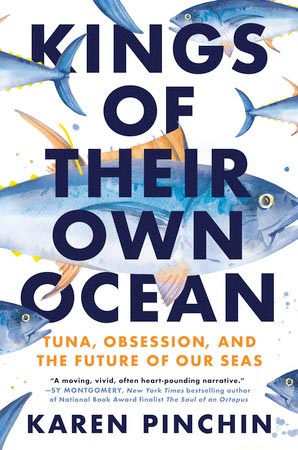 Rachel Carson was obsessed with the ocean. From first finding as a girl a fossilized fish in the land-locked, rocky hills around her home in Pennsylvania, to her endless reading of romantic poetry and novels about the sea, to her intense study of marine science, to her first looks at creatures from the sea aboard the Albatross II and III out of Woods Hole, Rachel Carson sought to understand the origins of all life from the waters around us and to share these wonders and mysteries with her fellow humans. Rachel Carson was obsessed with the ocean. From first finding as a girl a fossilized fish in the land-locked, rocky hills around her home in Pennsylvania, to her endless reading of romantic poetry and novels about the sea, to her intense study of marine science, to her first looks at creatures from the sea aboard the Albatross II and III out of Woods Hole, Rachel Carson sought to understand the origins of all life from the waters around us and to share these wonders and mysteries with her fellow humans.
Carson spent countless hours by the sea, observing, imagining, feeling, even weeping as she watched the annual run of mullets leaping in the air only to be caught by fishermen, never to swim free again.
The result of this obsession is Carson’s masterful ocean trilogy, all best-sellers, of Under the Sea-Wind (1941,1952), The Sea Around Us (1951) and The Edge of the Sea (1955). Before the Aqualung, before Jacques Cousteau and underwater photography, before the exploration and discovery of the ocean deeps in space age vessels some seven miles below the surface, Carson’s prose brought the ocean alive and created a post-war generation of American lovers of the sea. Obsessive also describes the people who are brought to life in Karen Pinchin’s Kings of Their Own Ocean, as it does Pinchin herself. Like Carson, Pinchin is a best-selling science journalist who has become entranced with the speed, power, endurance, beauty, and the troubling decline of the ocean’s magnificent and streamlined top predator – the bluefin tuna. READ MORE | | | | | | The Deepest Map: The High-Stakes Race to Chart the World's Oceans, Laura Trethewey (July 2023) "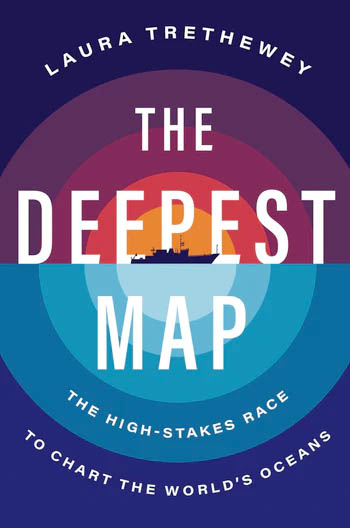 The dramatic and action-packed story of the last mysterious place on earth—the world’s seafloor—and the deep-sea divers, ocean mappers, marine biologists, entrepreneurs, and adventurers involved in the historic push to chart it, as well as the opportunities, challenges, and perils this exploration holds now and for the future." The dramatic and action-packed story of the last mysterious place on earth—the world’s seafloor—and the deep-sea divers, ocean mappers, marine biologists, entrepreneurs, and adventurers involved in the historic push to chart it, as well as the opportunities, challenges, and perils this exploration holds now and for the future."
“Should be required reading. . . . A gripping and all-too-timely account of what in more ways than one is turning out to be a very costly and questionably necessary race to the bottom. . . . Trethewey rises to the occasion here, relating in absorbing detail the ebb and flow of conflicting interests that tussle down among the vents and ridges of the hadal zone. It is all highly readable, and it is all deeply ominous.” —Simon Winchester, New York Times Book Review
The dramatic and action-packed story of the last mysterious place on earth—the world’s seafloor—and the deep-sea divers, ocean mappers, marine biologists, entrepreneurs, and adventurers involved in the historic push to chart it, as well as the opportunities, challenges, and perils this exploration holds now and for the future. Five oceans—the Atlantic, the Pacific, the Indian, the Arctic, and the Southern—cover approximately 70 percent of the earth. Yet we know little about what lies beneath them. By the early 2020s, less than twenty-five percent of the ocean’s floor has been charted, most close to shorelines, and over three quarters of the ocean lies in in what is called the Deep Sea, depths below a thousand meters. Now, the race is on to completely map the ocean’s floor by 2030—an epic project involving scientists, investors, militaries, and private explorers who are cooperating and competing to get an accurate reading of this vast terrain and understand its contours and environment. READ MORE | | | | | |  The Rachel Carson Council Depends on Tax-deductible Gifts From Concerned Individuals Like You. Please Help If You Can. The Rachel Carson Council Depends on Tax-deductible Gifts From Concerned Individuals Like You. Please Help If You Can. | | | | | | | |  Sign Up Here to Receive the RCC E-News and Other RCC Newsletters, Information and Alerts. Sign Up Here to Receive the RCC E-News and Other RCC Newsletters, Information and Alerts. | | | | | | | | | | | |